Frequently Asked Questions About Teeth and Dental Health
Most commonly asked questions in Dental Health
It is not uncommon when someone gets a doubt if teeth are made of bones.
Both of them are firm, hard and white and are made of calcium. So the doubt is reasonable.
Are teeth, bones?
The answer is No. Teeth are not a type of bone and are not made of bones. Both of them are different in their development, structure and function. [1, 2, 5]
Teeth and Bone:
Developmental difference
All organs in our body are basically formed from 3 groups of cells – Ectoderm, Endoderm and Mesoderm. Bone develops from mesoderm which also forms muscles and blood cells while teeth are formed from ectoderm which gives rise to hair, nail etc and from a special group called neural crest cells.
Structural difference
Both are different in their structure as well. Although both of them are largely made of calcium, Bone has collagen which resembles the Iron framework of a pillar and the calcium is deposited around it like cement[1] This collagen is absent in teeth while it has a special structure called Enamel- the strongest structure in human body. Enamel is absent in bones. Bones are constantly renewed throughout our life. This helps to heal the broken bones while a lost tooth never grows back and a broken tooth does not heal [2,4]
Functional difference:
Bones form the skeletal framework of our body giving it a shape and helps in movement while teeth are the organ of chewing and grinding the food.

Picture 1: Cut section of a bone
Image Source: exchange3d.com
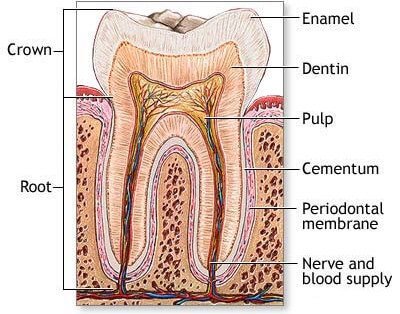
Picture 2: cut section of a tooth
Image Source: graphics8.nytimes.com
How many teeth do humans have?
Human beings have two sets of teeth in their lifetime. They are [3]
Deciduous teeth/milk teeth : They are 20 in number and are replaced by permanent teeth.
Permanent teeth: Once when the deciduous teeth falls, the permanent teeth erupt in their place and some of them erupt behind the milk teeth and remain throughout life.
How Are Teeth Numbered and Teeth Numbering Charts
When do babies get teeth?
The milk teeth begin to form at around 6th week of the fetus from 10 tooth buds. [6] The permanent teeth are formed at around 10th week of the fetus in the mother’s womb.
How many teeth do adults have?
In adults there are 32 permanent teeth which are irreplaceable.
If the teeth don’t develop in this period, they won’t develop at all. [3] These teeth lie buried in the gums and each tooth comes out of it in specific age of the baby.
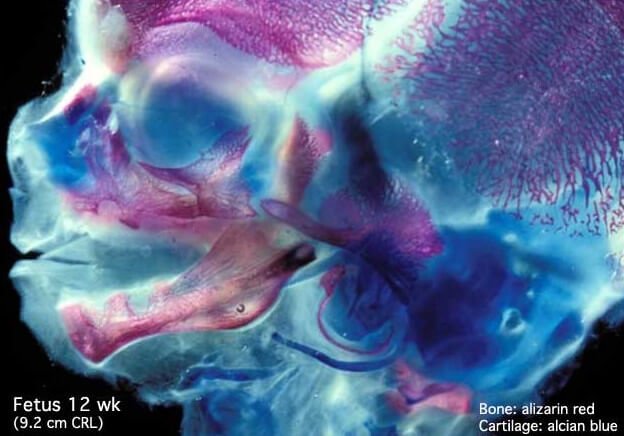
Picture 3: Teeth formation in a 12 week fetus seen as spaces in lower jaw
Image Source: php.med.unsw.edu.au
Teething
The process of eruption of teeth out of the gums is called Teething /Odontiasis.
When do babies start teething?
Teething occurs at around 6 – 24 months usually. Rarely babies have teeth at birth itself. They are called Natal teeth. Lower incisors are the first teeth to appear followed by upper incisors.
How long does teething last?
Teething gets completed at around 3 years when all the 20 milk teeth have erupted. [3]
Symptoms of teething:
A mother can identify that teething is going to happen as it is indicated by certain changes in the baby before the eruption of teeth. They are
- Excessive drooling.
- Fussiness
- Restless and avoiding food
- Keeping hands in the mouth often
- Irritable and have sleepless nights
Does teething cause fever?
Teething does not cause fever, loose stools, running nose, rashes or vomiting. If any of this happens, it is better to visit a clinician.[22]
Road to healthy teeth
A good oral hygiene is necessary for our own good and others as well and Brushing is the easy way that is taught to us from childhood just like potty training. But, are we doing it right? Let’s see…
How to Brush your teeth?
Tooth Brush
- Choose a tooth brush with soft bristles which do not hurt your gums.
- Avoid using brushes with natural bristles made of animal hair as they are good lodging for bacteria.
- Use a brush with small head , so that you can reach all the spots without hurting your mouth. “If you are straining to open wide enough to let the brush in, the brush is probably too big – says the consumer advisor of ADA [10]
- Use a tooth brush with a flexible neck.
- Using a manual or electronic tooth brush has no difference in maintaining dental hygiene.
It’s time to change your tooth brush once the bristles start splaying mostly every 3-4 months or sooner than that. [7, 8]
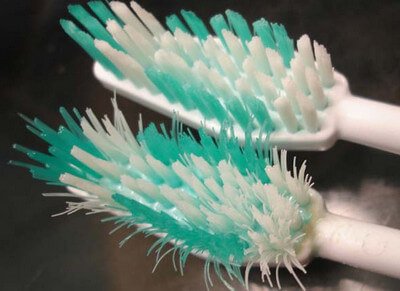
Picture 4: A normal tooth brush and a splayed tooth brush
Image Source: redmondmolloy.ie
Tooth Paste
A good tooth paste should strengthen the protective enamel covering of the teeth from the actions of harmful bacteria. Fluoride containing pastes are recommended by dentists as they strengthen the enamel.
But care should be taken not to swallow it and are not advisable for children less than 3 years of age. For younger children there are toothpastes with less concentration of fluoride. A small bead of tooth paste is sufficient and if it causes irritation, use tooth paste for sensitive teeth after getting suggestion from your dentist.
Steps to Brush
- Rinse your mouth once before brushing which flushes the loose grime on the teeth.
- Load the tooth brush with small amount of tooth paste and don’t cover the entire area of bristles.
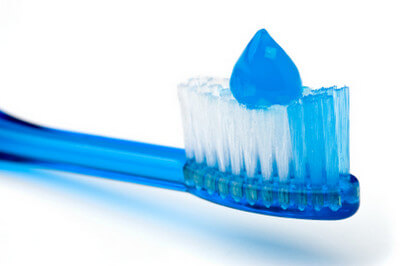
Picture 5: Right amount of tooth paste
Image Source: ipcblog.org
- Divide the teeth imaginarily into 4 quadrants as upper left, upper right, lower right and lower left.
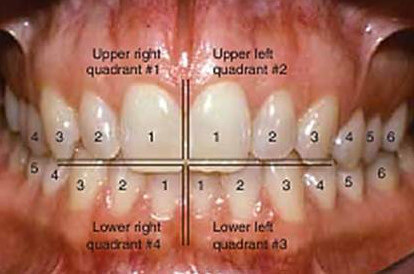
Picture 6: Teeth divided as 4 quadrants
Image Source: intranet.tdmu.edu.ua
- Start brushing the front teeth by moving the brush up and down and in circular motion. Don’t brush horizontally because it will scratch the gums [10]
- After finishing the front surface, open your mouth and go for the grinding surfaces of the molar teeth at the back in the lower job. Brush in back and forth motion
- Repeat the above step for the upper molars
- Then brush the inner surface of the teeth. The inner surface of lower front teeth is the most commonly missed spot as the tongue lays touching it while brushing [7,10]
- Gently brush your tongue and then spit
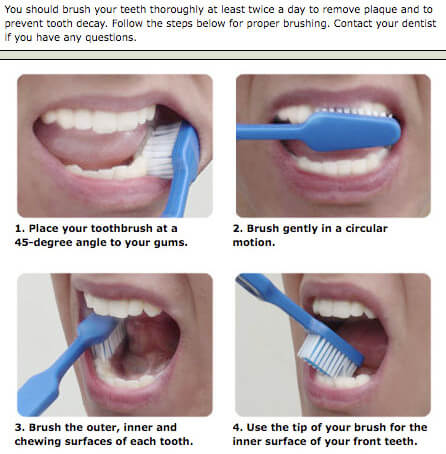
Picture 7: steps of brushing
Image Source: 2.bp.blogspot.com
- Rinse with salt water followed by plain water or fluoride mouth wash.
Video on How to Brush Properly
How to brush teeth with braces ?
Brushing teeth gets tricky with when you are wearing braces. The wires in the braces provide sager spots for the dirty bacterial film (plaque) to accumulate. [9,11,12]
Dentist suggest a Christmas tree brush or proxabrush that are specifically designed to brush with braces
Start brushing from lower jaw along the upper border of the brace and move it upward and backward. Then brush along the lower border of brace and move the brush backwards and downwards
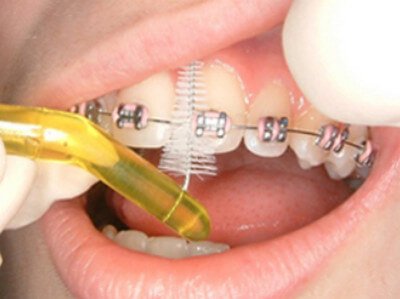
Picture 8: Christmas tree brush
Image Source: braces.ie
Flossing
Flossing is necessary to remove the food particles that have struck between the teeth and along the gum line which have escaped the bristles. Holding around 2-3 inches of the floss stiffly between thumb and index finger, move it up and down between the teeth and along the curvature of the teeth. Don’t snap the floss between the teeth and rinse with water or mouth wash after flossing. [7, 10]
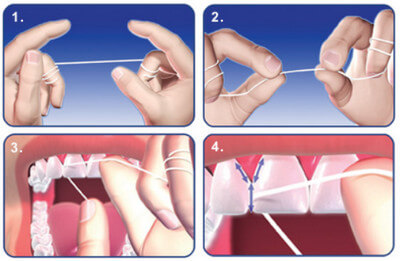
Picture 9: how to floss
Image Source: gr8smile.co.nz
Video on How to Floss
Things to remember on brushing:
How long should you brush?
- The whole brushing routine should last for 2 -3 minutes. Listen to your favorite song that plays for around 3 minutes, so that you will know that you have brushed for a good amount of time.
- Rinse the tooth brush after brushing and keep it upright to drain the water and let it dry. Germs thrive in moisture.
How many times should you brush?
- Brush at least twice a day – morning and before going to bed. It’s good if you can include a third one in the middle of the day.
- Rinse after every meal and brush 1 hour after the meal
- Don’t brush immediately after sugary and acidic food as it acts like scrubbing the teeth with acid and damage the enamel.
- Start brushing from different point every time so that same spot is not missed every time as you get lazy at the end of brushing.
How to get white teeth ?
A bright white smile will lighten up a sloppy day and this can be achieved by the process of teeth whitening. Teeth whitening is the most requested procedure in cosmetic dentistry [20] . White teeth can be achieved in 2 ways – whiteners and bleachers.
Whiteners
Whiteners are substances that remove teeth stain and restore the natural color of teeth.
How to whiten teeth with Baking soda/ Sodium bicarbonate? Is it correct??
Baking soda is a good teeth whitener which is commonly available at home. It reacts with harmful acids produced by the bacteria and neutralizes them, thus protecting the enamel. It removes the superficial stains by its mild abrasive action. Thus it can be used as a homemade teeth whitener. It gives excellent result when used occasionally to remove the stains. But when used for a long period of time and more frequently, its erosive action can damage the enamel. [16, 17, 18]
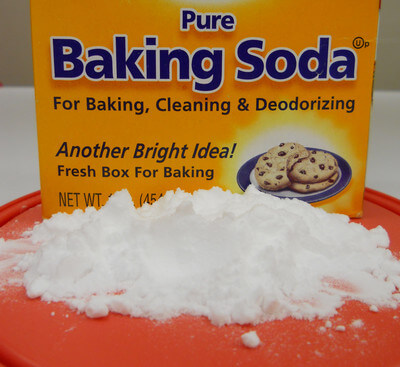
Picture 10: baking soda
Image Source: ces.ncsu.edu
How to whiten teeth at home?
- Take a small amount of baking soda.
- Mix it with water to make a paste.
- Brush using this paste to remove the stains and instant whitening.
Bleachers
Bleachers are substances that whiten the teeth more than its natural color. There are a lot of commercial bleachers available in which hydrogen peroxide is the major ingredient.
Does hydrogen peroxide whiten teeth?
Hydrogen peroxide removes both superficial and deep stains by removing a thin film over the enamel. This gives a brilliant white color to the teeth. It may cause temporary irritation to oral mucosa and should be used only after a dentist approval. [17]
How to maintain the teeth after whitening?
To maintain the brightness of teeth after a good bleach or whitening, one should avoid the foods which can stain the teeth. Any food that is colorful and stains your tongue and table cloth can stain your teeth as well.
Food that stain the teeth:[19]
- Beverages like Tea – Black tea stains the teeth most because they have substance called chromogen and tannin.
- Does green tea stain the teeth? Green tea and other natural tea stain teeth less than black tea, but it has been found that green tea cause more damage to the enamel that it makes the teeth vulnerable to get stained more by other food
- Coffee
- Carbonated drinks and energy drinks
- Dark colored wine
- Colored berries like blueberries and blackberries cause darker stain than light colored fruits like grapes. But the intensity of damage depends on the acidity of the fruit.
- Pickles with vinegar
- Colored candies and chewing gums
- Chewing tobacco
Natural teeth whiteners:
- Strawberries and apples – They have a chemical called malic acid which is the teeth whitening substance used in commercial teeth whiteners.
- Vegetables like carrot, celery, broccoli which are crunch to bite, loosen the food particles from teeth and prevent staining
- Sugarless gums and natural sweetener like xylitol reduces the bacterial action in the mouth
- Occasionally, rinse with a mixture of salt water and lemon juice
How to get straight teeth?
A white healthy tooth is attractive only if it’s in the right position. A crooked tooth is unsightly and needs to be corrected. The most common method used by orthodontists to correct crooked teeth is Braces
Braces:
Braces are applied in such a way that they apply a low pressure in a distributed manner over a period of time on the crooked teeth which then gets aligned to the desired position.
Braces contain metal wires which make it difficult to eat hard food and brush the teeth.
It causes discomfort in the initial days and requires regular visits to the dentist
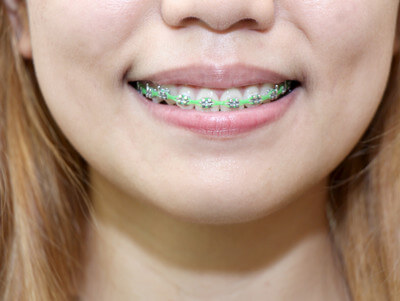
Picture 11: braces
Image Source: wikihow.com
How to straighten teeth without braces?
Plastic removable aligners – Customized plastic removable aligners are becoming popular. They are made by computers using the x ray of the patient. These aligners are transparent and removable. Hence the discomfort in wearing it, brushing and eating is greatly reduced.[21]
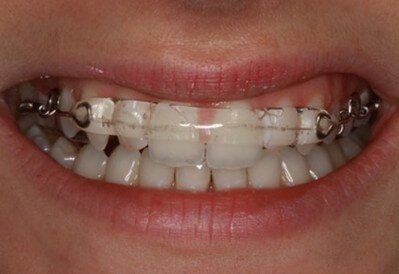
Picture 12: Teeth aligner
Image Source: imworld.aufeminin.com
Retainers – Retainers are used to straighten the mildly misaligned teeth
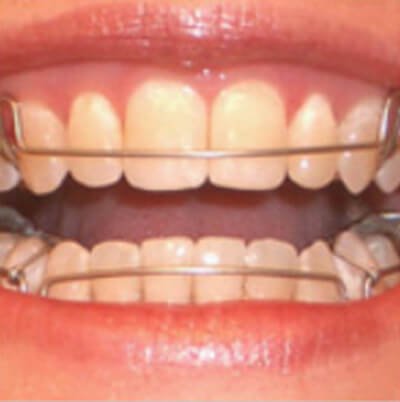
Picture 13: Teeth retainers
Image Source: 1800dentist.com
Contouring
Teeth contouring is actually reshaping the teeth. Strips of rough paper like material is used to remove a layer of enamel to get the desired shape. This is done only in mild deformities. It is a very expensive procedure.
Veneering
Dental veneers are teeth colored artificial film like thing made from porcelain to cover the teeth which may be crooked, chipped or stained. It does not straighten the teeth but looks like straight teeth.
A common dental problem
Wisdom tooth
Wisdom tooth which is the last molar tooth that erupts after 17 yrs of age may disturb the straightly aligned teeth as it grows in a cranky little space in the interior of the jaw. It causes severe discomfort and pain. The only permanent cure is wisdom tooth extraction. It is done under anesthesia as any other tooth extraction and once the anesthetic effect wears off, the pain begins. Ice packs may be kept on the jaw to relieve pain and painkillers like NSAIDs are used. As molars are the grinding teeth, one must be careful about the food they eat after the extraction. Otherwise, there is a possibility of injuring the spot again that causes bleeding and more pain.
What to eat after wisdom tooth removal?
- Avoid hard food like almonds and cashews that needs to be grinded by the molars
- Avoid crisps like potato chips that can break into sharp pieces and poke the spot
- Avoid fruits which are hard and have tiny seed like guava as the seeds may get stuck in the spot
- Avoid food which is hot and spicy
- Take food that is semisolid and smooth like a smoothie or a milk shake
- Take liquid food like juices often but avoid using straws. The suction force can start a new bout of bleeding from the extraction site
- Take soft and mushy food like mashed potato, mashed peas
As said above, a healthy tooth needs healthy food, hygienic oral habits and also a healthy mind. This is known by one of the common condition of teeth caused by stress and anxiety – Bruise.
Teeth grinding or Bruxism
Bruxism or grinding of teeth which is thought to be caused by inappropriate opposition of teeth (malocclusion) is mainly caused by psychological stress and anxiety. [13,14]
It usually occurs when the person is asleep and is noted by the partners. Some people have the habit of day time teeth grinding.
Symptoms of teeth grinding:
- Occasional teeth grinding does not cause serious harm. When it becomes regular, it causes
- Discomfort
- Pain
- falling out of teeth
- Jaw pain
- Weakening of the jaw bones and muscles
- Instability of the temperomandibular joint
When one is unaware of grinding of teeth and have the following symptoms, examination by a dentist can confirm it.
How to stop grinding teeth?
1. When a person is aware of grinding the teeth, relax the jaw muscles so that the teeth in both jaws don’t touch each other.
2. Drop the jaw and place the tongue between the teeth.
3. Stress relieving activities like
- Yoga
- Breathing exercise
- Meditation
- Cycling
4. Relaxing techniques
5. Habit breaking therapy
6. Medications that relaxes the muscles
7. Avoid chewing hard objects
Devices to prevent teeth grinding
Mouth guards
These are similar to the ones used in contact sports like boxing and rugby. It redistributes the pressure while grinding the teeth thereby reducing the impact. It is just a temporary effort that delays the damage and is not a permanent cure. [13,15]

Picture 14: Mouth guard
Image Source: drfester.com
Mouth splints
They are also known as occlusal splint or bite plate. They work as the same as mouth guards but have more flexibility and durability. They are expensive than mouth guards.
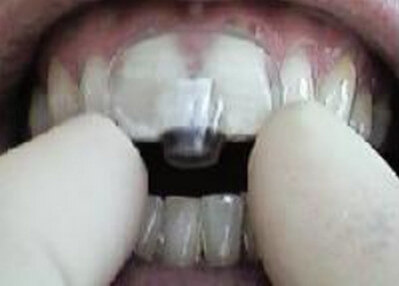
Picture 15: Mouth splints
Image Source: healthfirstdental.com
Mandibular advancement devices
It appears like 2 mouth guards fitted together. It holds the jaw forward and closed and prevents the opposition of the teeth while grinding. It is expensive and a bit painful to wear but is more effective. It is also used for other conditions like snoring and sleep apnea syndrome.
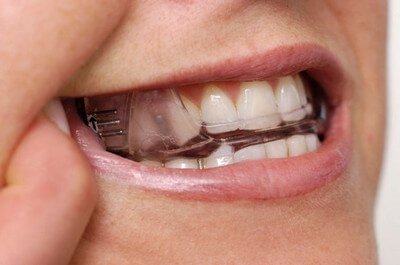
Picture 16: mandibular advancement devices
Image Source: sydneydentalexcellence.com.au
Thus a good oral hygiene is necessary for the health of the whole body and it depends on good psychological health as well. A bright white contagious smile can be achieved by taking care of simple details like brushing, flossing, whitening and getting an orthodontist opinion when there is a problem and most of all, visiting the dentist regularly.
References:
- http://en.wikipedia.org/wiki/Bone
- http://www.niams.nih.gov/Health_Info/Bone/Bone_Health/
- http://en.wikipedia.org/wiki/Dental_anatomy
- http://www.embryology.ch/anglais/sdigestive/gesicht05.html
- http://www.embryo.chronolab.com/teeth.htm
- http://www.wikihow.com/Brush-Your-Teeth
- http://www.colgate.com/app/CP/US/EN/OC/Information/Articles/Oral-and-Dental-Health-Basics/Oral-Hygiene/Brushing-and-Flossing/article/How-to-Brush.cvsp
- http://www.nhs.uk/Livewell/dentalhealth/Pages/Teethcleaningguide.aspx
- http://www.webmd.com/oral-health/healthy-teeth-10/brushing-teeth-mistakes
- http://www.webmd.com/oral-health/guide/care-of-braces-retainers
- http://www.wikihow.com/Brush-Your-Teeth-With-Braces-On
- http://health.howstuffworks.com/wellness/oral-care/problems/how-to-stop-grinding-teeth.htm
- http://www.webmd.com/oral-health/guide/teeth-grinding-bruxism
- http://www.nhs.uk/Conditions/teeth-grinding/Pages/Treatment.aspx
- http://health.howstuffworks.com/wellness/oral-care/products/does-baking-soda-whiten-teeth.htm
- http://www.ada.org/en/home-ada/about-the-ada/ada-positions-policies-and-statements/statement-on-the-safety-and-effectiveness-of-tooth
- http://www.webmd.com/oral-health/wisdom-tooth-extraction
- http://www.webmd.com/oral-health/features/foods-stain-teeth-feature
- http://en.wikipedia.org/wiki/Tooth_bleaching
- http://health.howstuffworks.com/wellness/oral-care/kids/straighten-kids-teeth-without-braces.htm
- http://www.medicinenet.com/teething/article.htm
Published by Dr. Raj MD under Dental Health.
Article was last reviewed on August 6th, 2018.

